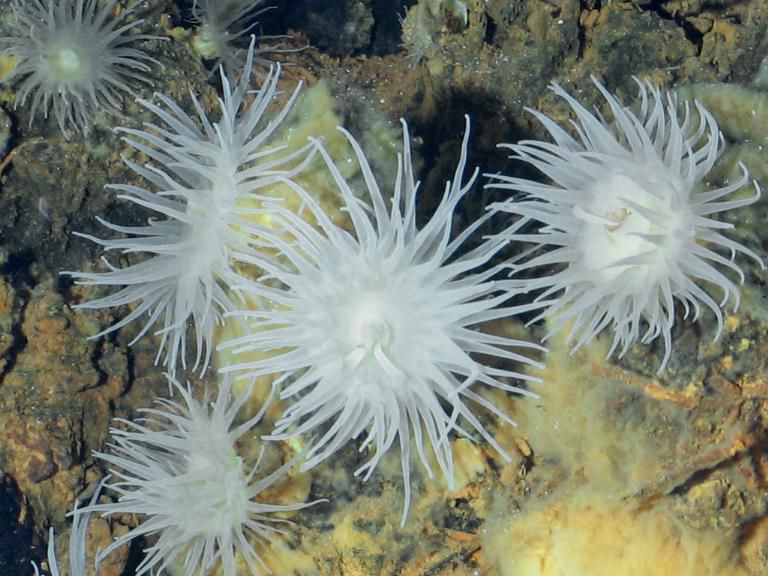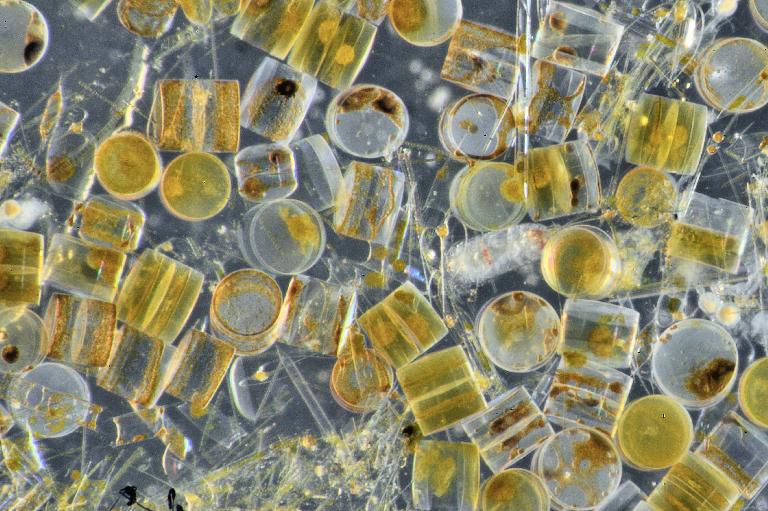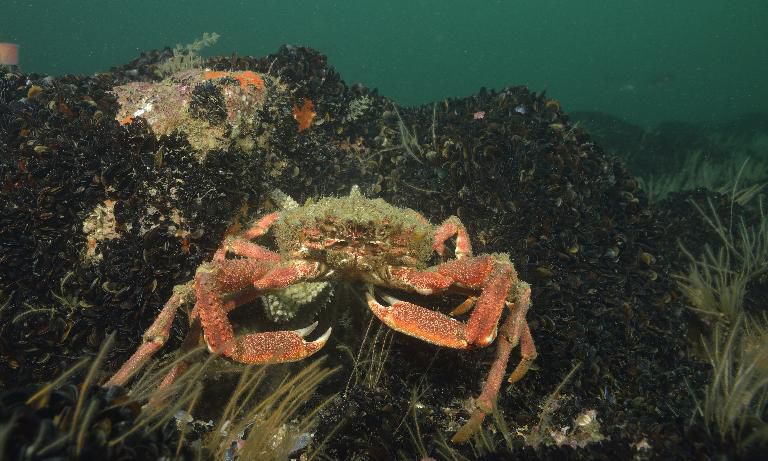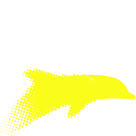Biology is the science of life. It studies flora and fauna as well as their environment. The measured data are obtained from various sources: research cruises and monitoring networks. It is completed by research conducted in the field of fisheries and aquaculture.
Data from monitoring networks
The monitoring networks set up by Ifremer produce results for most of the physical, chemical and biological parameters for describing the environment. These data are associated with environmental monitoring as well as health monitoring in relation to the following themes:
Benthos
Benthos encompasses all living organisms in the lowest layer of the ocean. This includes:
- phytobenthos (plants species such as algae and seagrasses)
- zoobenthos (animal species such as worms, molluscs, crustaceans, fish, etc.) among which we can distinguish between organisms living on the sediment surface (epifauna) and those living inside the sediment (infauna).

Ifremer
Benthic ecosystems, which feature local ecological characteristics, are exposed to fluctuations of natural or anthropogenic origin: they are thereby permanent indicators of the environmental status.
Within the framework of the REBENT network (Benthic Network, a project which collects data relating to habitats in coastal areas), only marine macrobenthos is studied (i.e. organisms over 1 mm in size).
Public health microbiology
Given the wide variety of pathogenic micro-organisms (bacteria, viruses, protozoa) in inshore waters, and their highly irregular presence, health controls are based on counts of the bacteria Escherichia coli (E. coli) or "faecal contamination test germs" as a basic test.
Almost all pathogenic micro-organisms identified in inshore waters come from human or animal faecal matter and are permanently accompanied by a great abundance of E. coli.
Phytoplankton and phycotoxins
The REPHY network (French Network for Observation and Monitoring of Phytoplankton and Phycotoxins) was set up by Ifremer to regularly monitor shellfish in their environment (farms, beds). The aims are:
- to observe all the phytoplankton species in coastal waters
- to list events such as coloured water, exceptional blooms and proliferation of species that are toxic or harmful to marine fauna
to closely monitor species which produce dangerous toxins for shellfish consumers.

Ifremer
Shellfish stocks
The RESCO network (Shellfish Observation Network) monitors sentinel groups of Pacific oysters Crassostrea gigas, representative of French production, along France's entire coastline. This monitoring effort provides national data on their growth, mortality and farming performances, as well as contributing to a better understanding of the phenomena observed. It also generates data related to the presence of pathogens in these oysters, as well as on environmental variables (temperature, salinity, flora on certain sites).
The REPAMO network (Mollusc Pathology Network) monitors the health status of molluscs on the coastline of mainland France, both in natural beds and farms.

Ifremer
Deep-sea benthic biology data
Deep-sea benthic biology data are obtained from research cruises using sampling, observation and measurement equipment for fauna close to the seabed and its physico-chemical environment. Such fauna surveys can be conducted either from the surface vessel or by deploying a submersible or moorings.
The results gathered are:
- samples of biological organisms
- water or sediment samples which undergo subsequent analysis to determine various physical and chemical parameters
- in situ measurements taken either periodically or continuously
- observations recorded in photographs or videos.
All the results are related to references: taxonomic classification of living organisms, list of physico-chemical parameters and corresponding analysis methods, etc.

©Ifremer - Olivier Dugornay
